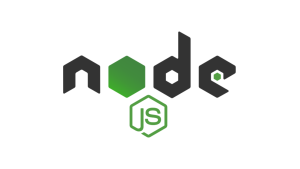When I first joined New Relic, I really didn't understand the importance of observability, because I came from a frontend background. As I began learning about why observability was valuable for developers, I started digging deeper into the open source ecosystem and learning what makes it possible for modern apps to maintain uptime. I learned more about OpenTelemetry, a popular open source tool for monitoring your apps and websites, but it was intimidating because I couldn't find any introductory tutorials online guiding me through the process of instrumentation.
It wasn't until I began instrumenting my own apps using the OpenTelemetry documentation that I realized how easy it was to get started. I collaborated with freeCodeCamp.org to create a beginner-friendly resource for anyone to begin instrumenting apps with OpenTelemetry. I worked with an amazing technical content creator named Ania Kubów to bring this one-hour video course to life. This course teaches how to use OpenTelemetry, including microservices, observability, tracing, and more.
Instrumenting your Node.js apps with OpenTelemetry
As systems become more complex, it’s increasingly important to get visibility into the inner workings of systems to increase performance and reliability. Distributed tracing shows how each request passes through the application, giving developers context to resolve incidents and showing what parts of their systems are slow or broken.
A single trace shows the path a request makes, from the browser or mobile device down to the database. By looking at traces as a whole, developers can quickly discover which parts of their applications are having the biggest impact on performance and how their users are affected.
That’s pretty abstract, right? So let’s zero in on a specific example to help clarify things. We’ll use OpenTelemetry to generate and view traces from a small sample application. You can watch the following video and also walk through the steps I describe in the the rest of this post.
Spinning up a movies app
We wrote a simple application consisting of two microservices: movies and dashboard. The movies service provides the names of movies and their genre in JSON format, and the dashboard service returns the results from the movies service.
To spin up the app, run the following command:
$ npm i
$ node dashboard.js
$ node movies.jsNotice the delay variable in the movies microservice. It causes random delays returning the JSON:
const express = require('express')
const app = express()
const port = 3000
app.get('/movies', async function (req, res) {
res.type('json')
const delay = Math.floor( ( Math.random() * 2000 ) + 100);
setTimeout((() => {
res.send(({movies: [
{ name: 'Jaws', genre: 'Thriller'},
{ name: 'Annie', genre: 'Family'},
{ name: 'Jurassic Park', genre: 'Action'},
]}))
}), delay)
})
Tracing HTTP requests with OpenTelemetry
OpenTelemetry traces incoming and outgoing HTTP requests by attaching IDs. To do this, you need to complete the following steps:
- Instantiate a trace provider to get data flowing.
- Configure that trace provider with an exporter to send telemetry data to another system where you can view, store, and analyze it.
- Install OpenTelemetry plugins to instrument specific node modules to automatically instrument various frameworks.
You need to have Docker on your machine to run a Zipkin instance. If you don't have Docker yet, it's easy to install. As for Zipkin, it's an open-source distributed tracing system created by Twitter that helps gather timing data needed to troubleshoot latency problems in service architectures. The OpenZipkin volunteer organization currently runs it. Finally, if you want to export your OpenTelemetry data to New Relic in Step 4, sign up to analyze, store, and use your telemetry data for free, forever.
Step 1: Create a trace provider and configure it with an exporter
To create a trace provider, you need to install the following tool:
$ npm install @opentelemetry/nodeOpenTelemetry auto instrumentation package for Node.js
The @opentelemetry/node module provides auto-instrumentation for Node.js applications, which automatically identifies frameworks (such as Express), common protocols (HTTP), databases, and other libraries within your application. This module uses other community-contributed plugins to instrument your application to automatically produce spans and provide end-to-end tracing with just a few lines of code. A span represents a unit of work in a distributed system.
OpenTelemetry plugins
Install the plugins:
$ npm install @opentelemetry/plugin-http
$ npm install @opentelemetry/plugin-expressWhen the Node.js HTTP module handles any API requests, the @opentelemetry/plugin-http plugin generates trace data. The @opentelemetry/plugin-express plugin generates trace data from requests sent through the Express framework.
Step 2: Add the trace provider and the span processor
After tracers are implemented into applications, they record timing and metadata about operations that take place (for example, when a web server records exactly when it receives a request, and when it sends a response).
Add the following code snippet, which performs two actions:
- Creates a trace provider.
- Adds a span processor to the trace provider.
This code gets data from your local application and prints it to the terminal:
const { NodeTracerProvider } = require('@opentelemetry/node');
const { ConsoleSpanExporter, SimpleSpanProcessor } = require('@opentelemetry/tracing');
const provider = new NodeTracerProvider();
const consoleExporter = new ConsoleSpanExporter();
const spanProcessor = new SimpleSpanProcessor(consoleExporter);
provider.addSpanProcessor(spanProcessor);
provider.register()If you want to learn more about this code, check out the OpenTelemetry docs on tracers.
After you add this code snippet, whenever you reload http://localhost:3001/dashboard, you should get something like this (beautiful things in your terminal):
Step 3: Use Docker to install Zipkin and start tracing your application
You instrumented OpenTelemetry in the previous step. Now you move the data that you collected to a running Zipkin instance.
Spin up Zipkin
Spin up a Zipkin instance with the Docker Hub Image:
$ docker run -d -p 9411:9411 openzipkin/zipkinYou now have a Zipkin instance up and running. You can load it by opening http://localhost:9411 on your web browser You see something like this:
Export to Zipkin
Although neat, spans in a terminal window are a poor way to gain visibility into a service. You’re not going to want to scroll through JSON data in your terminal. Instead, it’s a lot easier to see a visualization in a dashboard. Let's work on that now. In the previous step, we added a console exporter to the system. Now you ship this data to Zipkin.
In the following code snippet, you instantiate a Zipkin exporter, and then add it to the trace provider:
const { NodeTracerProvider } = require('@opentelemetry/node')
const { ConsoleSpanExporter, SimpleSpanProcessor } = require('@opentelemetry/tracing')
const { ZipkinExporter } = require('@opentelemetry/exporter-zipkin')
const provider = new NodeTracerProvider()
const consoleExporter = new ConsoleSpanExporter()
const spanProcessor = new SimpleSpanProcessor(consoleExporter)
provider.addSpanProcessor(spanProcessor)
provider.register()
const zipkinExporter = new ZipkinExporter({
url: 'http://localhost:9411/api/v2/spans',
serviceName: 'movies-service'
})
const zipkinProcessor = new SimpleSpanProcessor(zipkinExporter)
provider.addSpanProcessor(zipkinProcessor)After you make the changes, open your Zipkin instance at localhost:9411, start your application back up, and request some URLs. Tracing data is usually represented by a bar, just like the following example, and is referred to as span.
Step 4: Use the OpenTelemetry Collector to export the data into New Relic
What happens if you want to send the OpenTelemetry data to another service that manages and analyzes your data for you?
The talented contributors to OpenTelemetry came up with a solution to address this challenge:
The OpenTelemetry Collector is a way for developers to receive, process, and export telemetry data to multiple backends. This collector acts as the intermediary, getting data from the instrumentation and sending it to multiple backends to store, process, and analyze the data.
It supports multiple open source observability data formats like Zipkin, Jaeger, Prometheus, and Fluent Bit, sending it to one or more open source or commercial backends.
Configuring the OpenTelemetry Collector with New Relic
New Relic is a platform for you to analyze, store, and use your telemetry data for free, forever. Sign up to use it with the remaining steps in this tutorial.
Clone the OpenTelemetry Collector with New Relic Exporter and spin up the Docker container, making sure to export the New Relic API key. To get a key, go to the New Relic one dashboard and choose API keys from the dropdown menu in the upper right.

Then, from the API keys window, click the Create a key button.
When creating the key, make sure you choose the Ingest - License key type. Then click Create a key to generate the key.
After you have an API key, you need to replace <INSERT-API-KEY-HERE> in the code snippet below with your API key.
export NEW_RELIC_API_KEY=<INSERT-API-KEY-HERE>
docker-compose -f docker-compose.yaml upMake sure to change the reporting URL from http://localhost:9411/api/v2/spans to http://localhost:9411/ in both dashboard.js and movies.js:
const zipkinExporter = new ZipkinExporter({
url: 'http://localhost:9411',
serviceName: 'movies-service'
})Step 5: Look at your beautiful data
In New Relic One, click the Explorer tab:
When you click on the service, you should be able to see some traces!
The trace in the dashboard is transmitting data about the random delay that was added to the API calls:
Final thoughts
Instrumenting your app with OpenTelemetry makes it easy to figure out what is going wrong when parts of your application are slow, broken, or both. With the collector, you can forward your data anywhere. You can choose to spin up an open source backend, use a proprietary backend like New Relic, or just roll your own backend! Whatever you choose, I wish you well you in your journey to instrument everything.
Étapes suivantes
- You can try out New Relic One with OpenTelemetry by signing up for our always-free tier today.
- To learn more about OpenTelemetry, see the Understand OpenTelemetry blog series.
- Ready to apply your knowledge and instrument a basic application in your preferred programming language? Go to the OpenTelemetry Masterclass.
Les opinions exprimées sur ce blog sont celles de l'auteur et ne reflètent pas nécessairement celles de New Relic. Toutes les solutions proposées par l'auteur sont spécifiques à l'environnement et ne font pas partie des solutions commerciales ou du support proposés par New Relic. Veuillez nous rejoindre exclusivement sur l'Explorers Hub (discuss.newrelic.com) pour toute question et assistance concernant cet article de blog. Ce blog peut contenir des liens vers du contenu de sites tiers. En fournissant de tels liens, New Relic n'adopte, ne garantit, n'approuve ou n'approuve pas les informations, vues ou produits disponibles sur ces sites.




